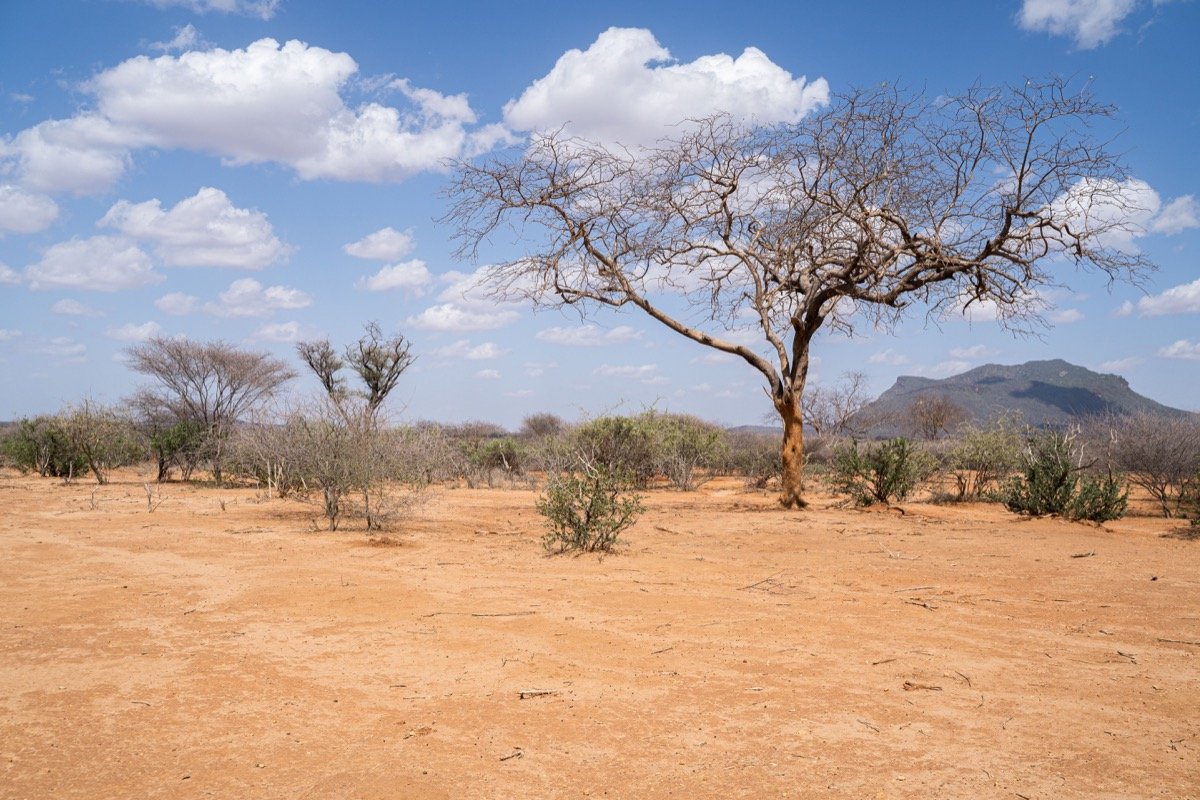Drought induced Human Wildlife Conflict
Our hearts ache as we report on the first case of Human Wildlife Conflict we’ve had in a long time.
A heartbreaking story of the mounting pressure and harsh reality of a deepening drought in Northern Kenya.
During the first weeks of January, an elephant bull limped into the Sarara waterhole, struggling to put weight on his front, right leg. As we approached, we realised that the elephant had been shot. Our hearts ached as this was the first case of Human Wildlife Conflict we’ve had in a long time.
Taking immediate action
We immediately reported the case to Kenya Wildlife Services (KWS) who dispatched Dr Aminga. He cleaned the wound as best he could and administered antibiotics. From darting to end, the whole procedure took only 30mins. The elephant bounced back really quickly and seemed to be doing really well.
On Wednesday 25th of January, two weeks after the initial treatment, another 30-minute follow-up treatment was done by Dr Matti Mutinda from KWS. It was a routine treatment and nothing out of the ordinary was detected.
An unexpected turn (for the worse)
On Thursday morning, when we went to go check on the elephant, we found him laying on his side, under the tree where he was treated the day before. He must have collapsed during the night. Adult elephants normally sleep standing up, or by leaning against a tree. Because of their size, they seldom lie down - so seeing the bull like this was very distressing.
We immediately jumped into action to ferry water from the camp in containers and filled a wheelbarrow with water so he could drink and stay hydrated. We positioned the wheelbarrow in such a way that his trunk could easily reach. This process continued throughout the day, into the night. Our rangers kept watch during the night and made a fire to keep hyenas at bay.
A fight till the bitter end
On Friday, the 27th of January, the elephant had still not gotten onto his feet and we enlisted the help of vets, ropes and tractors to try and get him up, all while the ferrying of water continued. Everyone on the scene fought as hard as they could, but by nightfall on Friday, the elephant seemed completely spent and exhausted.
His will to live which was so evident on Wednesday, just two days before, has slowly dwindled and it was as if everyone on the scene including him, knew the reality of the situation. The harsh reality of human-wildlife conflict and the worsening conditions of drought in Northern Kenya had taken a toll on this beautiful elephant bull.
We fought tirelessly to keep him alive, but in the end, it was not enough. As the sun set on Friday, the 27th of January, we said goodbye to the wounded elephant, our hearts heavy with grief and a deep sense of loss.
Why Human Wildlife Conflict?
Namunyak Conservancy was among the fortunate few regions in the area to have been blessed with a fleeting moment of rainfall in December. Though the rain provided a temporary relief; the sparse greenery is rapidly withering away and we’re quickly sliding back into the harsh reality of a deepening drought.
The lack of rainfall in the areas north of Namunyak, has placed an immense strain on the local communities, their livestock, and the wildlife. As a result, tribes and their livestock from the north have begun to migrate to Namunyak, in hopes of finding respite in the comparatively more favourable conditions of our valley. However, as the population density increases and resources become increasingly scarce, tensions are beginning to rise.
Combating Desertification
We would like to ensure this majestic elephant wasn’t lost in vain and we pledge to do all we can to regenerate a broken, drought stricken landscape. Please join us from near or far, and support our re-greening efforts by sponsoring a bag of indigenous seeds.
We’d like to extend a special thank you to Air Wilderness for their support.


